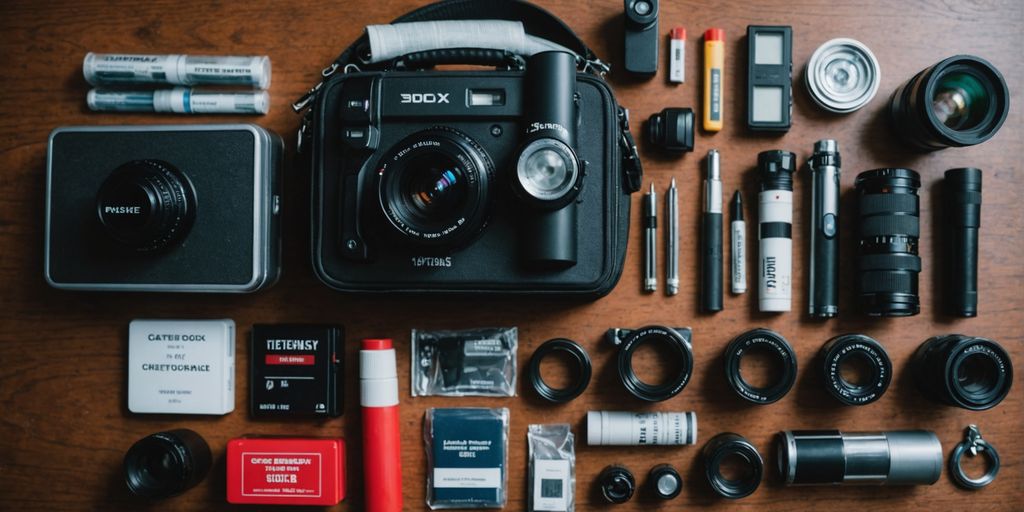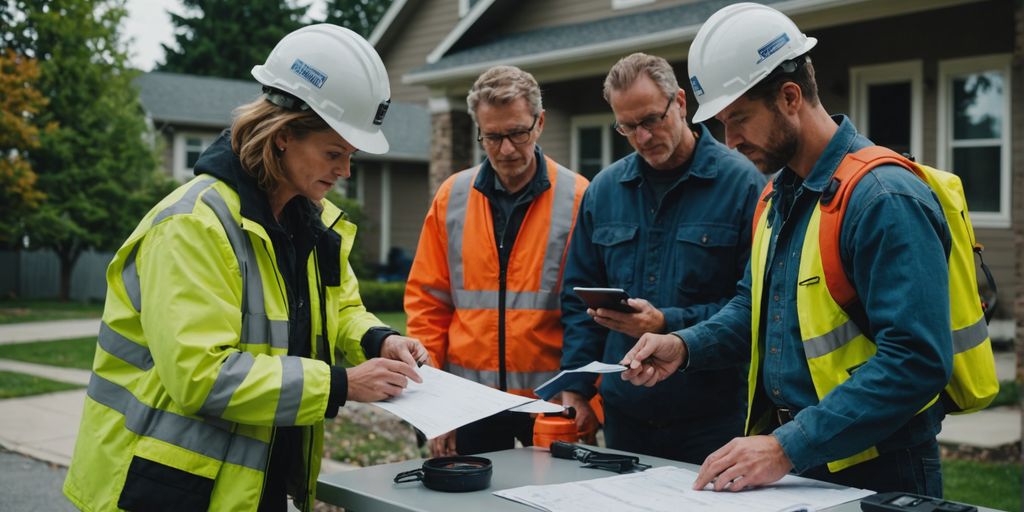Emergencies can strike without warning, making it crucial to have a well-prepared emergency kit. Whether you’re dealing with a roadside breakdown, severe weather, or a medical emergency, having the right tools on hand can make all the difference. This article provides a detailed list of essential items you should include in your emergency kit to ensure you’re ready for any situation.
Key Takeaways
- Roadside safety tools can help you manage minor repairs and keep you safe while waiting for help.
- Weather preparedness items ensure you stay safe and comfortable during adverse weather conditions.
- Having a well-stocked emergency kit can give you peace of mind and reduce stress during emergencies.
- Communication devices are essential for staying in touch and getting help when needed.
- Basic repair tools and first aid supplies are crucial for handling minor injuries and repairs.
Roadside Safety Tools
When you’re on the road, having the right tools can make a huge difference in handling minor repairs and staying safe while waiting for help. Being prepared can reduce stress and give you peace of mind. Here are some essential roadside safety tools you should have in your emergency kit:
Jumper Cables
Jumper cables are a must-have for any vehicle. They can help you start your car if the battery dies. Make sure to get a set that is long enough to reach between vehicles easily.
Tire Repair Kit
A flat tire can happen at any time. A tire repair kit can help you fix minor punctures and get back on the road quickly. These kits usually include sealant and tools to remove the object causing the puncture.
Reflective Triangles
In case of a breakdown, making your vehicle visible to other drivers is crucial. Reflective triangles should be placed behind your car to alert oncoming traffic, especially at night or in poor weather conditions.
Weather Preparedness Essentials
When it comes to facing adverse weather conditions, having the right tools in your emergency kit is crucial. A well-stocked kit can keep you safe and comfortable during snowstorms, heavy rain, or other extreme weather events.
Basic Repair Tools
Having the right tools for basic repairs can make a huge difference in an emergency. These tools can help you fix minor issues and get back on the road quickly.
Communication Devices
In an emergency, staying connected is crucial. Elevate your survival skills with reliable communication tools that ensure you can reach out for help or stay informed about the situation. Here are some essential communication devices to include in your emergency kit:
Two-Way Radios
Two-way radios are indispensable for off-grid communication. They allow you to stay connected with family members or rescue teams even when cellular networks fail. Make sure to have extra batteries or a solar charger to keep them powered.
Battery-Powered Radio
A battery-powered radio is vital for receiving emergency broadcasts and updates. It keeps you informed about weather conditions, evacuation orders, and other critical information. Opt for a model that also supports NOAA weather alerts.
Signal Flare
Signal flares are essential for attracting attention in low-visibility conditions. They can be a lifesaver if you need to signal for help in remote locations. Always keep a few in your emergency kit for added safety.
First Aid Supplies
Accidents can happen anywhere, so having a first aid kit is crucial for treating injuries on the spot. Your kit should include basic items such as bandages, antiseptic wipes, gauze pads, adhesive tape, scissors, tweezers, and a first aid manual. Consider adding any personal medications and an emergency contact card.
Bandages and Gauze
Bandages and gauze are essential for covering wounds and stopping bleeding. Make sure to have a variety of sizes to handle different types of injuries.
Antiseptic Wipes
Antiseptic wipes are used to clean wounds and prevent infections. Always have plenty of these in your kit.
Pain Relievers
Pain relievers like aspirin or ibuprofen can help manage pain and reduce inflammation. Keep a small supply in your first aid kit for emergencies.
A well-stocked first aid kit can make a big difference in an emergency. Be sure to check your supplies regularly and replace any used or expired items.
Personal Safety Items
When preparing an emergency kit, personal safety items are crucial. These tools ensure you can protect yourself and others in various situations. Focus on safety, security, and emergency preparedness to stay ready for any unexpected events.
Food and Water Supplies
In an emergency, having enough food and water is crucial. Staying hydrated and nourished can make a big difference, especially if you have to wait for help. Here are some key items to include in your emergency kit:
Non-Perishable Food
Stock up on non-perishable snacks like energy bars, nuts, and dried fruit. These items have a long shelf life and can provide essential nutrients. Rotate these supplies regularly to ensure they stay fresh.
Water Bottles
It’s recommended to have at least one gallon of water per person per day. This should cover drinking, cooking, and basic hygiene needs. Store bottled water in a cool, dark place and check expiration dates periodically.
Manual Can Opener
A manual can opener is a must-have tool for accessing canned goods. Make sure it’s easy to use and in good working condition.
Preparing for the unexpected with our comprehensive line of emergency food and water treatment kits ensures you have the essentials when you need them most.
Lighting and Power Sources
In an emergency, having reliable lighting and power sources is crucial. Visibility is key during an emergency, especially at night. Here are some essential items to include in your emergency kit to ensure you are never left in the dark.
Flashlights
A flashlight is a must-have for any emergency kit. LED flashlights are highly recommended because they offer bright illumination and long battery life. It’s wise to keep extra batteries in your kit and consider a hand-crank flashlight as a backup. Headlamps are also a good option as they free up your hands for other tasks.
Extra Batteries
Always have extra batteries on hand to ensure your devices remain operational. This is especially important for flashlights and other battery-powered tools. Make sure to check the battery type required for each device and stock up accordingly.
Portable Charger
A portable charger can be a lifesaver when your electronic devices run out of power. Look for a charger with multiple inputs, including USB and automobile auxiliary power outlets, to keep your devices charged on the go. Some portable chargers also come with built-in flashlights, adding an extra layer of utility to your emergency kit.
In any emergency situation, having the right lighting and power sources can make a significant difference. Be prepared and ensure these items are part of your emergency kit.
Comfort and Warmth
In an emergency, staying warm and comfortable is crucial. Having the right items can make a big difference in your ability to cope with unexpected situations. Here are some essential tools to include in your emergency kit for comfort and warmth.
Navigation Aids
When you’re in an emergency, having the right navigation tools can make a huge difference. Being able to find your way is crucial, especially if you’re in an unfamiliar area. Here are some essential navigation aids to include in your emergency kit:
City Map
A detailed city map can help you navigate through urban areas. It’s a good idea to have a physical map because electronic devices can fail or run out of battery.
Compass
A compass is a simple yet effective tool for finding your direction. It doesn’t rely on batteries or signals, making it a reliable choice in any situation.
GPS Device
While a compass and map are great, a GPS device can provide real-time location data and directions. Make sure to keep it charged and have extra batteries or a portable charger on hand.
In an emergency, knowing your location and how to get to safety can save your life. Always keep these navigation aids in your emergency kit.
Shelter and Protection
In an emergency, having the right shelter and protection tools can be the difference between safety and danger. Ensuring peace of mind with life secure emergency solutions is crucial. Here are some essential items to include in your emergency kit for shelter and protection:
Plastic Sheeting
Plastic sheeting is versatile and can be used to create a temporary shelter, cover broken windows, or protect against rain. It’s lightweight and easy to store, making it a must-have for any emergency kit.
Duct Tape
Duct tape is incredibly strong and can be used for a variety of purposes, from securing plastic sheeting to fixing broken items. It’s an essential tool for quick, secure shelter setup.
Emergency Tent
An emergency tent provides a quick and reliable shelter solution. These tents are designed to be easy to set up and are compact enough to fit in your emergency kit. They are ideal for disaster preparedness and can protect you from the elements.
Remember, emergency kits, maintenance, escape plans, and drills are essential for family safety during crises.
Miscellaneous Tools
When preparing your emergency kit, don’t overlook the miscellaneous tools that can be lifesavers in unexpected situations. These items might not fit neatly into other categories, but they are just as crucial for your safety and survival.
Conclusion
Having a well-prepared emergency kit is not just about being ready for the unexpected; it’s about ensuring your safety and peace of mind. Whether you’re dealing with a roadside emergency, severe weather, or any other unforeseen event, the right tools and supplies can make all the difference. By taking the time to gather and organize these essential items, you’re not only protecting yourself but also your loved ones. Stay prepared, stay safe, and travel with confidence knowing you’re ready for anything.


